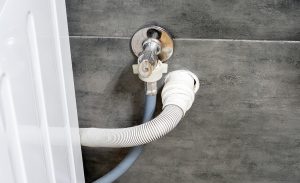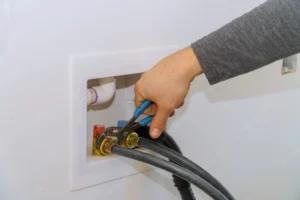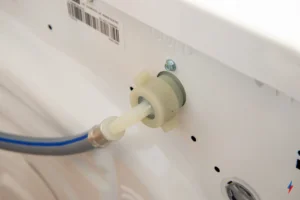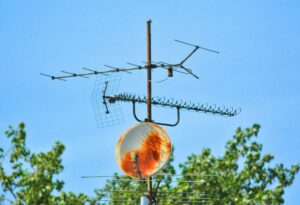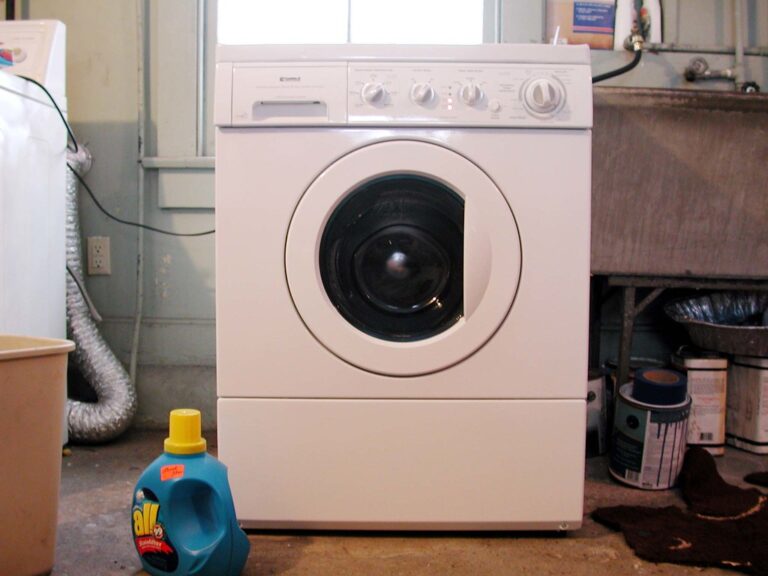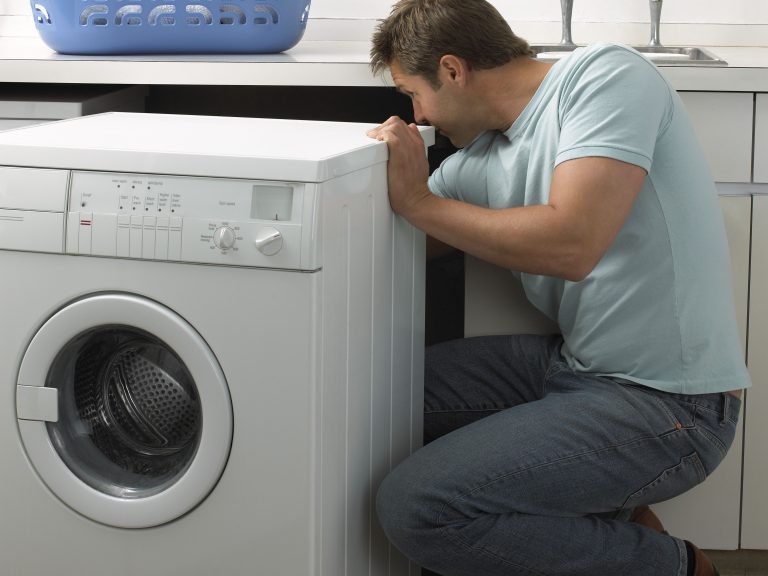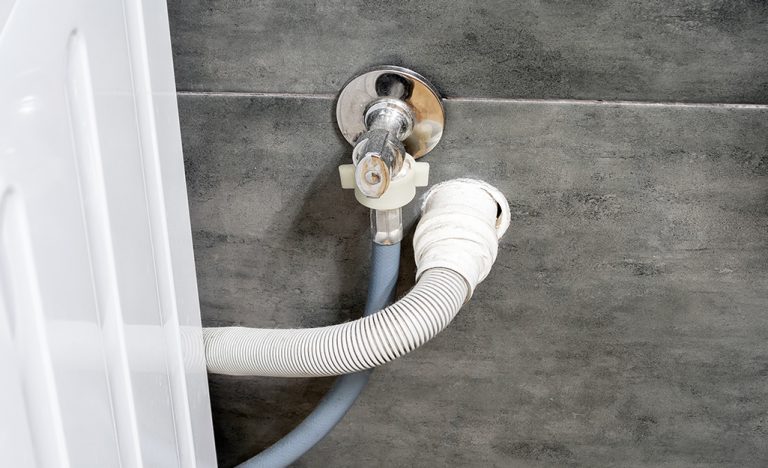How Far Away Can A Washing Machine Be From The Drain?
Proper positioning of a washing machine from the drain allows for the efficient disposal of wastewater from the appliance. It is also relevant for the preservation of parts like the drain hose.
Your laundry machine will not function efficiently if it’s not within the recommended distance from the drain. If so, how far away can the two units be?
The standard length of washing machine drain hoses is 1.5m (4.9ft). Therefore, it is logical that the appliance is far from the drain. However, you can extend it a further 1.2m if the need arises.
How Far Can You Place Your Washing Machine From the Drain?
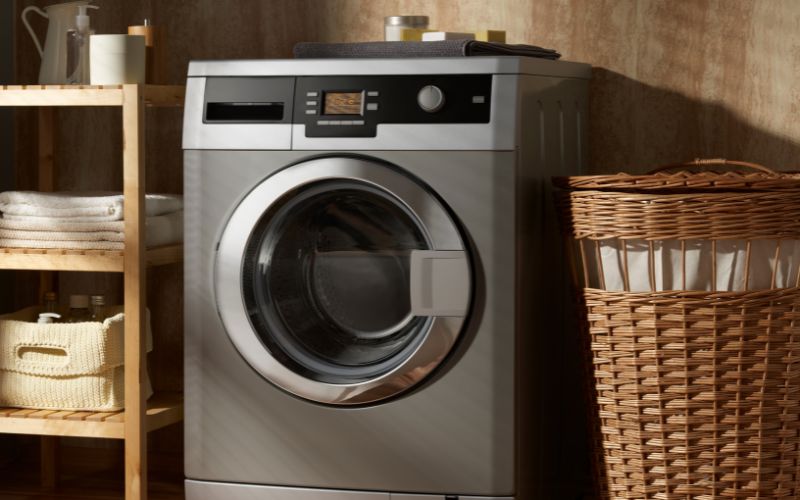
Plumbing experts recommend a maximum distance of 2.7m (9ft) between your washing machine and the drain.
It is the optimum space for wastewater disposal through drain hoses.
This distance recommendation considers the length of the washing machine drain hose and possible extension.
That is, 1.5m standard hose length and 1.2m maximum extension.
Sometimes, your washing machine can only be below 2.7m from the drain. In such a case, you can exceed the distance limit.
However, you should know that you may encounter problems if your machine is too far from the drain.
The same thing applies if the two are too close to each other. If your washing machine is too far from the drain, its drain hose is too long.
It’s not ideal for a washing machine to have a lengthy drainage hose because of the following reasons:
#1. Wastewater Accumulation and Backflow
When a drainage hose is too long, the machine’s pressure may not force the wastewater out. Consequently, the water will accumulate in the pipe.
Water build-up in the hose can result in smells and other unpleasant conditions in the machine.
It can also cause the pipe to burst and spill wastewater into your home. Furthermore, a longer drain hose may cause wastewater to flow back into your machine.
Backflow of grey water into washing machines has an undesirable effect on laundry.
#2. Damage To Drain Hose
Long drain hoses are more susceptible to kinks, knots, and loops, which can potentially damage them.
Kinking also makes wastewater accumulate in the pipe. Knots and loops result in the breaking of drain hoses over time.
Broken drainage pipes leak and flood your laundry with dirty water from the washing machine.
It is advisable, therefore, to stick to the recommended dimensions of the washing machine drain hose.
The length will guide you to place the machine from the drain. If the available position for the machine is too far from the drain, extend the hose.
If extending it is not enough, consider draining the machine manually until you find the best place.
Can You Extend Your Washing Machine Drain Hose?
You may find the drain hose length inadequate when installing your washing machine.
You can extend the length to reach the drain for efficient water disposal in such a situation.
However, you should ensure that the extension is moderate to avoid the problems of a long drain hose. Recommended drain hose extension falls within 1.2m (4ft) of length.
The recommended length is not the only consideration when extending your washing machine drain hose.
The right materials are also necessary for a safe installation of the extension.
Some people mistake using a garden hose for their washing machine drain hose extension because it is cheap. However, it is not advisable.
Garden hoses are not durable enough for use as washing machine drain hoses.
Some of them are unsafe for use in the home due to their chemical content. The right thing to do is to get the right drain hose extension kit.
This set of materials contains the basic things needed for extending a washing machine drain hose.
You also need a plumber’s service, although you can extend your machine drain hose.
Follow the steps below to do so if you don’t know how:
#1. Get the Right Materials
The table below contains the necessary equipment for drain hose extension and their uses:
| Materials | Uses |
|---|---|
| Drain Hose Extension Kit | Contains the extension hose, adaptors, jubilee clips, etc. |
| Hose Cutter | For cutting the hoses |
| Measuring Tape | For Measuring the length of the hose |
| Flathead Screwdriver | For tightening the jubilee clips |
Washing machine brands have extension kits that are compatible with their appliances. Ensure you get the right one for your machine to avoid misfit.
#2. Disconnect Washer From Electricity and Water Supply
Working on your washing machine while it is still connected to electricity is dangerous. Disconnect it from the source of the power supply.
To do so, unplug the washer from the wall socket. Alternatively, you can turn off the circuit breaker.
Locate the nearest control valve and cut off the water supply to the washing machine.
This step ensures that the appliance doesn’t get filled with water during the process.
#3. Move the Washer from Its Position
You need access to the drain, so you must move the washing machine from its position.
Put a towel underneath it to catch any water coming out from it. After that, remove the hose from the drain.
#4. Extend the Hose
- Measure the extension hose to ensure it is not too long. If it is, reduce it.
- Attach the adaptor to the end of the original drain hose.
- Put the jubilee clips over the adaptor and the hose.
- Insert the extension hose into the adaptor and the original hose.
- Tighten the jubilee clips.
- Put the extended hose into the drain and test the machine.
You should note, however, that some brands don’t support extensions for their washing machine drain hose. Doing so may void the appliance’s warranty.
If you care much about the warranty, extend the drain or standpipe instead of the hose. Whatever the case, make sure you are clear before attempting a washer’s drain hose extension.
Does Your Washing Machine Drain Need a Vent?
A vent is a necessity for plumbing fixtures. Your washing machine drain is one of such and so requires a vent.
Your washing machine drain needs a drain for some very important reasons.
One of these is odor management in the drain and the laundry room. A vent provides a path for air. It provides an escape route for wastewater vapor.
Without it, the vapor will stay in the drain and cause it to emit an unpleasant odor.
The vent also aids in the smooth flow of water through the drain. It ensures that the wastewater does not overflow. Without one, you stand a chance of flooding your laundry room.
A vent is necessary for your washing machine drain, but it is not compulsory to have a separate one for it.
You can link the drain to the general vent stack in your home if you have one already.
Sometimes it may not be easy to connect the drain with the vent stack.
In such a situation, you can use an air admittance valve (AAV) as a suitable alternative.
Can You Drain a Washing Machine Outside?
Your ability to drain your washing machine outside depends on some factors. You can if the prevailing conditions permit. Otherwise, you cannot.
One factor determining if you can drain a washer outside is the local laws in your area. In some places, it is legal, while others are illegal.
You must fulfill requirements even in places where you can dump your gray water outside. Some states allow it for agricultural practices only.
Some places like Texas permit draining gray water outside if it does not exceed the daily limit of 400 gallons. You must also treat it before releasing it outside.
You can drain your washing machine outside Alabama if the water stays on your property. This rule ensures you don’t cause a nuisance to your neighbors.
If your local laws allow it, you can use the gray water from your washing machine for irrigation purposes. Again, there are some rules guiding this, albeit natural ones.
Before you water your plants with greywater, make sure it doesn’t contain elements that are toxic to them. Check if your detergent contains potentially harmful substances.
Use wastewater with phosphorus-based detergents instead of one with sodium-based detergents. Also, ensure that it does not contain chlorine bleach.
Drain your washing machine into your septic tank or the sewer system to be on the safer side. It is healthier and safer than draining it outside.
Should You Elevate Your Washing Machine Drain?
You should consider elevating your washing machine drain if it is below the minimum recommended height.
These heights are 24 and 30 inches for the front and top load washers.
Drains below these levels can cause the machine to malfunction. One of the problems of low washing machine drains is siphoning.
Siphoning occurs when water drains from the washer when it is not supposed to. This problem can result in incomplete wash cycles.
While elevating your washing machine drain is necessary, you must not raise it too high.
Exceeding the drain height limit can be problematic for your machine too.
The maximum height for a washing machine drain is 8ft. The obvious reason is that the appliances can only pump water that high.
When the drain is too high, the machine’s pressure will become inefficient for pumping out wastewater.
This situation results in a backflow of the water. The drain height is also important in a washing machine’s water flow rate.
When it is too high, the appliance will take more time to expel dirty water from it.
Conclusion
Your washing machine should be at a moderate distance of 2.7m (9ft) or less from the drain.
An extension is possible if it doesn’t extend the gap between the two units far more.
The right drain height and a proper vent also contribute to the efficient performance of the laundry appliance.

